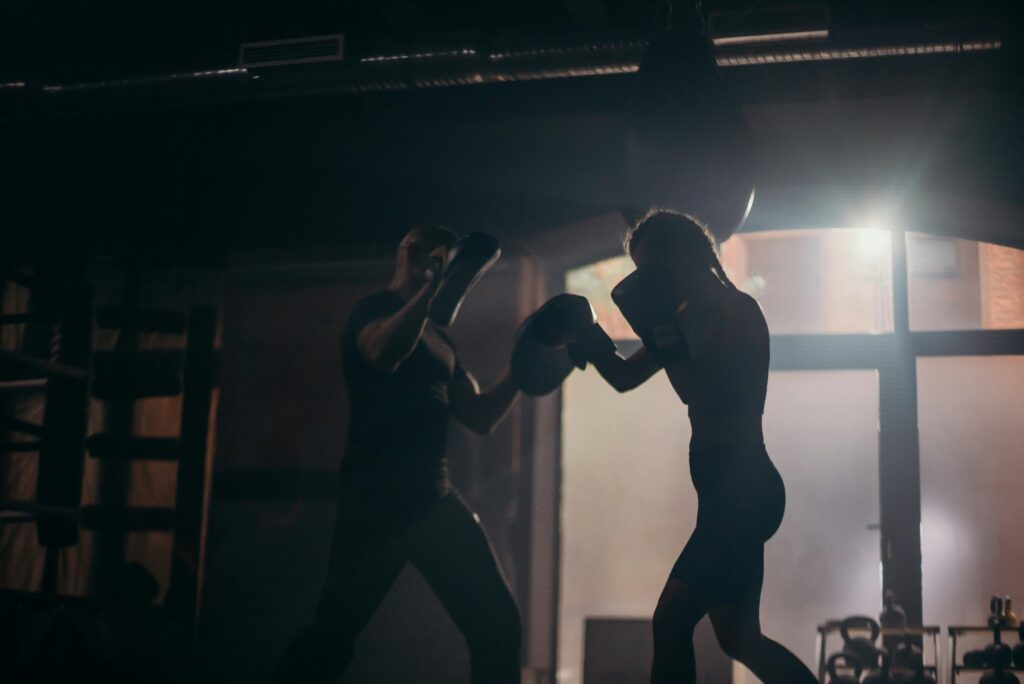
Whether you’re a boxer, MMA fighter, or martial artist, it’s not just muscle that wins battles—it’s mental control under fire. According to sports neuroscience, the difference between winning and losing often comes down to cognitive control, reaction time, and emotional regulation.
Here are 7 brain hacks backed by scientific research—with direct links to studies and tactical breakdowns for each.
1️⃣ Pre-Fight Visualization (Mental Rehearsal)
The Science:
A meta-analysis from the Journal of Sports Sciences reviewed 35+ studies and found mental imagery improves performance in strength, speed, and endurance sports.
Why It Works:
- Activates the same neural pathways as physical movement (motor cortex).
- Reduces pre-fight anxiety by creating a sense of control.
How to Apply (For Fighters):
- Sit quietly for 5–10 minutes, eyes closed.
- Visualize:
- Walking toward the ring.
- Landing your first strike cleanly.
- Taking a hit without panicking.
- Focus on every sense: noise, breath, glove texture, opponent’s body language.
✅ Pro Tip:
Use guided fight visualizations via audio. Example: upload your own on YouTube, record fight cues in your voice.
2️⃣ Train Reaction Speed with Cognitive Drills
The Science:
A 2022 study in Frontiers in Psychology showed reaction drills enhance cognitive flexibility and reduce time-to-action under high stress.
Why It Works:
- Strengthens synaptic firing speed between sensory input and motor output.
- Prevents tunnel vision in fights.
Fighter-Specific Drills:
- Simple Reaction Test:
- Try here → Aim for <200ms.
- Verbal Cue Shadowboxing:
- Have a partner yell combos while you shadowbox.
- Color/Light Reaction Apps:
- Example: Blink Reflex Trainers, Stroop Effect Apps.
✅ Pro Tip:
Combine reaction drills post-fatigue for fight simulation.
3️⃣ Box Breathing for Stress Control
The Science:
Stanford Medicine (2021) verified that controlled breathing lowers cortisol and improves focus under duress.
Why It Works:
- Activates parasympathetic nervous system (rest-and-digest).
- Reduces panic attacks, especially in high-stakes rounds.
Technique (Used by Navy SEALs):
- Inhale 4 seconds → Hold 4 → Exhale 4 → Hold 4.
- Repeat for 1–2 minutes pre-fight and during corner breaks.
✅ Pro Tip:
Pair with self-talk cues: inhale while thinking “calm,” exhale while thinking “control.”
4️⃣ Power Up with Self-Talk Cues
The Science:
Journal of Applied Sport Psychology (2018) found that performance-enhancing self-talk boosts endurance, focus, and stress resilience.
Why It Works:
- Stimulates the prefrontal cortex.
- Replaces negative loops with focused commands.
Examples for Fighters:
- “Hands up.”
- “Breathe.”
- “Stay sharp.”
- “Control, not chaos.”
✅ Pro Tip:
Record your self-talk cues in your own voice and listen before training.
5️⃣ Train Under Fatigue for Mental Toughness
The Science:
According to Neuroscience Letters (2020), dual-task training under fatigue helps the brain adapt to decision-making while physically exhausted.
Why It Works:
- Forces the brain to maintain focus even when glucose is low and lactic acid is high.
- Mimics the later rounds of a real fight.
Fight-Specific Examples:
- 3×30 seconds:
- Sprint → 20 push-ups → Shadowbox focusing on slips and counters.
- Technical Bag Work While Exhausted:
- End session with jab-only rounds, focusing on form.
✅ Pro Tip:
Film yourself at the end of workouts. Review guard position, stance integrity, punch speed.
6️⃣ Strategic Music for Focus & Aggression
The Science:
International Review of Sport and Exercise Psychology (2020) links music to dopamine release, narrowed attention, and improved time-to-reaction.
Why It Works:
- Stimulates mood-specific neural pathways.
- Sets tempo for physical action.
Fight Music Tactics:
- Pre-fight Calm Playlist: Lo-fi beats, binaural tones (Alpha waves: 8–12 Hz).
- Fight Mode Playlist: 130–180 BPM. Examples:
- Eminem – “Till I Collapse”
- DMX – “X Gon’ Give It To Ya”
- Japanese Drums/Metal Hybrid Playlists.
✅ Pro Tip:
Use noise-canceling headphones backstage, but remove them 2–3 minutes before walking out to adjust to real-world sound.
7️⃣ The 1-Second Rule to Avoid Panic
The Science:
Journal of Cognitive Neuroscience (2018) showed a deliberate 1-second pause activates prefrontal control areas over the amygdala (fight-or-flight center).
Why It Works:
- Shifts actions from instinctive panic to conscious decision-making.
- Crucial during counters, knockdowns, and ref breaks.
Drills:
- Partner throws jabs. You must:
- Block.
- Pause 1 second.
- Counter with conscious form.
✅ Pro Tip:
Film sparring sessions and count out loud your pauses when reviewing footage.
✅ Key Takeaways for Fighters
| Brain Hack | Fight Benefit |
|---|---|
| Visualization | Faster execution, less anxiety |
| Reaction Drills | Sharper counters, improved reflex |
| Box Breathing | Cortisol control, calm under fire |
| Self-Talk | Focus, mental recovery |
| Fatigue Training | Last-round performance |
| Strategic Music | Mood control, aggression boost |
| 1-Second Rule | Smarter decisions under stress |
⚔️ Closing Thought:
“The fight is won or lost far away from witnesses—behind the lines, in the gym, and out there inside your head.” — Muhammad Ali
Download Your Free Fight Mind Checklist
Don’t just read—train it. Grab a printable one-page checklist with all 7 hacks, step-by-step breathing guides, and bonus self-talk templates.
👉 [Download Now]
